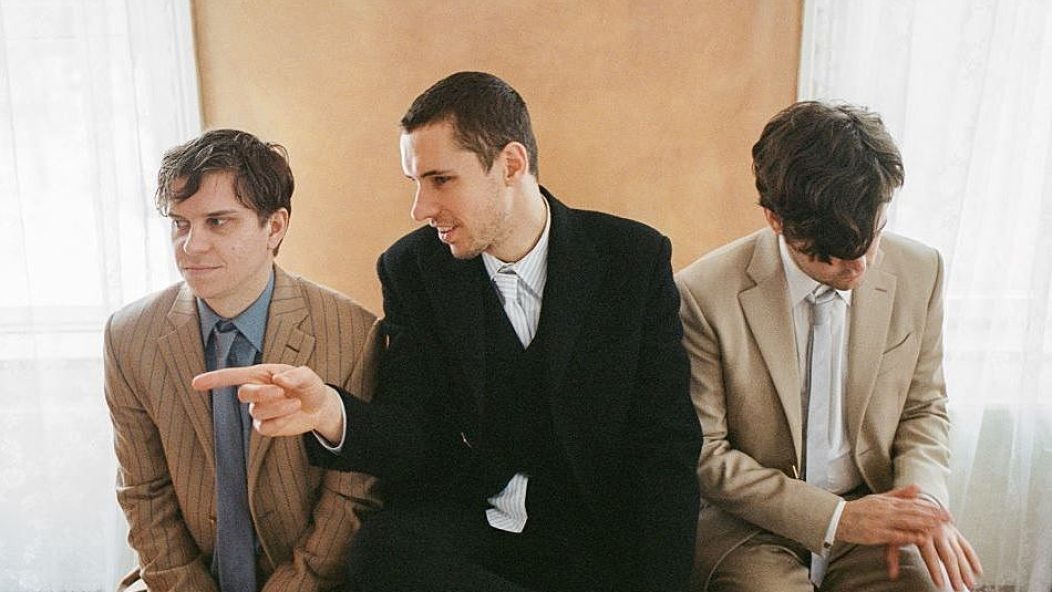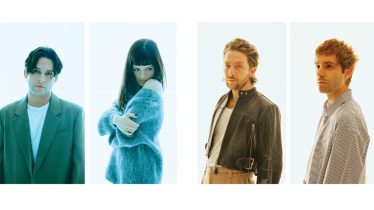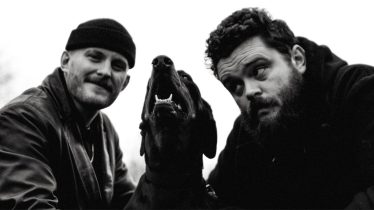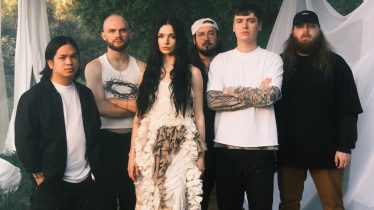
The BADBADNOTGOOD live experience shines through on 'Talk Memory'
BADBADNOTGOOD understand the beauty of patience.
A crackle of static leads into three minutes of winding build on “Signal From The Noise”—the opening track of their new album, Talk Memory—before they finally explode, all fervid fuzz and crashing cymbals. It’s a daring journey, one that becomes more vivid with repeated listens and is a representative introduction to the band’s first new album in five years.
Much has changed in that time frame. Between Kendrick Lamar production credits (“LUST.”) and MF DOOM collaborations (“The Chocolate Conquistadors”), BADBADNOTGOOD stepped back to breathe. When they returned to the studio as a trio, they found themselves refiguring their roles and recording an album rather quickly.
Read more: The Zombies on their next album, the Rock And Roll Hall Of Fame and more
Across eight tracks (nine if you secure a physical edition), Alexander Sowinski, Chester Hansen and Leland Whitty use improvisation more than ever to capture the spirit of their live shows. Take “Signal From The Noise” as proof, a song that began as a distorted bass interlude during gigs before becoming the nine-minute odyssey that it is now.
Furthermore, Talk Memory evokes the fury of Billy Cobham’s Spectrum or Mahavishnu Orchestra’s Inner Mounting Flame, in large part due to Whitty playing guitar on a handful of tracks. “Guitar and fuzz just have to happen at some point, right?” he says, laughing. Other times, it’s imbued with the delicacy of Bill Evans.
Read more: How Thrice challenged themselves like never before on ‘Horizons/East’
Just as importantly, Talk Memory marks a “multi-generational passing of the torch,” as Whitty puts it. BADBADNOTGOOD have always been students of the past, picking out samples and digging deep to find the source of the magic. Here, collaborators such as Brazilian composer Arthur Verocai and veteran producer/saxophonist Terrace Martin, among others, help them expand their vision in bold directions.
Do you feel like making this album was a way to renew your chemistry, given that you’re functioning as a trio right now and it had been a couple of years since you had been in the studio?
CHESTER HANSEN: Absolutely. That’s literally exactly what it was. In a communication and personal sense, we were reconnecting, but also, in a musical sense, like you said, it’s the first thing we’ve done as a trio without a piano player. So we all were trying to see what our new roles would be. Leland and I ended up playing a bunch of keyboards and stuff like that, and [we were] just stumbling upon different sounds.
This record is about returning to your roots, and I know hip-hop is a huge part of that. In what ways do you think hip-hop informs the album?
HANSEN: One thing that I just thought of when you said that was how we recorded it onto tape, and I think we’ve always been obsessed with sonics. This was just the next step in that process and really trying to focus on certain things, like the sound of the snare drum and things like that, which I think is definitely in parallel with hip-hop and the collaborative nature of it. You know, bringing people into the studio and sending the tracks to other instrumentalists to do their thing on it is another parallel.
LELAND WHITTY: A lot of the collaborations on this record, like Karriem [Riggins] and Terrace [Martin], have obviously done more beat-making or producer kind of stuff. [Hip-hop is] how we ended up discovering [Arthur] Verocai. It was a really huge honor for us to be able to work with him. We found out about him through the Special Herbs DOOM record. We always make music that’s inspired by what a lot of hip-hop samples have been made from. A lot of music that we love has come from just digging in and trying to find where the samples come from.
I was actually going to ask you about the Arthur Verocai collaboration and how that came to be and what it was like to work with someone who is such a major influence on your music.
WHITTY: It was absolutely incredible. We recorded the whole record before the pandemic hit, and the whole collaboration process with him was pretty open, and it was all done through email. He wrote and recorded all the parts in Brazil. [It was] an email that was one of the most exciting [things] we ever received. But since we love him so much, the first time he sent us stuff, we were all blown away, and that’s what’s on the record.
We were on tour in Brazil and played a show where we opened for him and played a set of our own music, and then his orchestra came out, and we joined them for the last four songs, playing songs from his classic self-titled record. So that was a huge musical moment for us, and that’s where that relationship started.
While we’re talking about all the collaborations, I thought it was really cool how on the last track, “Talk Meaning,” you got Terrace Martin, Brandee Younger and Arthur Verocai on there. What was it like to work with Terrace, [who frequently collaborates with Kendrick Lamar, has toured with Herbie Hancock, etc.]?
WHITTY: Intimidating, but in a good and positive way, just because he’s such a legend. Literally the top-of-the-game producer and top-of-the-game instrumental saxophonist. But he’s really humble, too, so it was easy to work with him, but there was that kind of energy of how we have to kill it and bring it in the first take or so. What you hear on the record is essentially like he just learned the song, and you’re going for it.
How did you end up piecing together a track with three collaborators on it? Was it difficult?
WHITTY: I guess that’s one of Verocai’s simplest arrangements on the record. After we sent him that track, he did a fleshed-out version of the melody, and then Brandee Younger [harpist] was the last contributor to the record. But it was just really beautiful. We asked her to do an extended outro just because there are so many people on that track. It’s one of the most energetic ones. It’s cool to have her take it out with such an open and beautiful, sparse ending, you know? It cleanses the palate.
I feel like my favorite track on the album is “Timid, Intimidating” because it’s dreamy like Bill Evans but then has the fire of Billy Cobham. Could you tell me more about how you created it?
HANSEN: That was one of the ones that I wrote by myself before we started recording, so I had a really funny-sounding MIDI version of it. Then I deleted the file somehow, but I remembered the entire thing, so I taught it to Alex and Leland, and then it morphed into the crazy thing that it is now. But it was really fun to record. We did a simple bed track, but then we did a bunch of fluid overdubs and chimes and all kinds of stuff.
You posted on Instagram that this album was a bucket-list item. What made it that way?
WHITTY: Being fans of music and studying music from different eras, a huge thing that we do, in general, is look back to older generations to learn from them in every kind of capacity, from production to actually just playing your instrument. I think there’s a direct connection with this record to be able to collaborate with people from an older generation, like Verocai. And I mean, I guess multiple generations if you consider all the collaborators. We got to work with [Terrace Martin and Karriem Riggins] in the studio, and even if it wasn’t spoken, I think we’ve all learned a ton from just their expression in that experience that we had together. So, I think this record sums up the multi-generational passing of the torch kind of thing.
This interview appeared in issue 398, available here.








